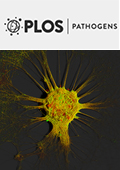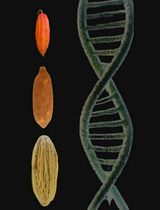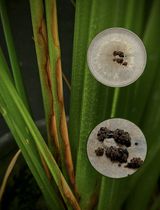- EN - English
- CN - 中文
Fusarium graminearum Inoculation on Wheat Head
禾谷镰刀菌的麦穗接种
发布: 2018年08月05日第8卷第15期 DOI: 10.21769/BioProtoc.2964 浏览次数: 8867
评审: Feng LiRosario Gomez-GarciaAnonymous reviewer(s)
Abstract
Fusarium graminearum, the major causal agent of Fusarium head blight (FHB), causes serious wheat yield losses and a threat to human and animal health. The main efforts to combat the disease are the research of pathogenesis mechanisms and breeding for disease resistance plants. The efficiency of these actions could be evaluated by reliable inoculation assay, which is performed by accurate and repeatable inoculation methods. Hence, a standard procedure of effective wheat inoculation should improve the accuracy of pathogenicity evaluation. Here, we present a protocol for wheat spike inoculation with fungal conidial suspensions or fungus agar discs. These methods show highly reproducibility and accuracy on wheat infection experiment in laboratory conditions.
Keywords: Fusarium graminearum (禾谷镰刀菌)Background
Fusarium graminearum is a destructing fungal pathogen which causes globally serious Fusarium head blight (FHB) disease on cereal crops. In recent years, the incidence of FHB increased with the global climate change and changes in farming practices. Additionally, F. graminearum produces several mycotoxins including trichothecene mycotoxin deoxynivalenol (DON), which threatens the health of humans and animals (Tanaka et al., 1988; Windels, 2000; Su et al., 2018). Up to date, the most effective tools to control FHB are derived from the studies on pathogenic mechanisms and breeding for disease resistant plant (Steiner et al., 2009; Son et al., 2013).
Because lack of the pathogen-specialized patterns that typically induce gene-for-gene-mediated resistance in the host (van Eeuwijk et al., 1995), the infection and spreading of F. graminearum are easily influenced by the environment. The study of pathogenesis mechanisms could be accelerated by analyzing of the F. graminearum pathogenicity. It is necessary to make a standard and an effective protocol of inoculation which is repeatable and accurate. One of the most important method to prevent FHB is breeding for resistant plants. Numerous studies have shown that inheritance of resistance of wheat to FHB is of a quantitative nature. Therefore, the major task of research FHB resistance is to map the quantitative trait loci (QTLs) region, and a large number of QTLs were described by genetic mapping in diverse wheat germplasm (Buerstmayr et al., 2009; Dhariwal et al., 2018). To verify the functions in QTLs region, an effective inoculation protocol is indispensable. However, the traditional wheat inoculation method for resistance identification is using the conidial suspension to widely sprinkle on the wheat surface instead of inoculation in the specific position of wheat in the field. This inoculation method is constrained by many factors, such as lower accuracy or stability, and sensitivity to environment (Fernando et al., 1997; Francl et al., 1999). The objectives of this protocol are to introduce a method of F. graminearum inoculation, which is standard, effective and repeatable on wheat in a growth chamber. It could help to improve the analysis accuracy and reduce the costs to some extent. In brief, the method can lay a foundation for the research of FHB pathogenesis and resistant breeding.
Materials and Reagents
- 20 μl pipette tips
- Centrifuge tube, 50 ml
- Petri dish, round (60 mm x 15 mm)
- Pots (25 cm in diameter)
- Grey cinnamon soil (obtained from wheat field of Yangling)
- 20 cm x 30 cm Plastic bag (Tuopu Daily Chemicals Company, Miaojie, catalog number: MBRL-A )
- Hole puncher (diameter: 2 mm)
- Miracloth (Merck, catalog number: 475855-1R )
- Round toothpick (yekee, catalog number: Y-9892 )
- Flowering stage Wheat (Triticum aestivum) cultivar of the Xiaoyan 22 (available upon request)
- F. graminearum wildtype strain PH-1 (NRRL 31084) (available upon request, Cuomo et al., 2007)
- Pathogenicity defective mutant Fgkin1 (Luo et al., 2014)
- Urea (GB 2004-2001) (Shaanxi Coal Chemical Corporation, Huashan)
- Carboxymethylcellulose sodium salt (Sigma-Aldrich, catalog number: C5678-500G )
- Ammonium nitrate (NH4NO3) (Spectrum Chemical Manufacturing, catalog number: YY975 )
- Mono potassium phosphate (KH2PO4) (Guangdong Guanghua Sci-Tech, catalog number: 1.01863.020 )
- Magnesium sulfate heptahydrate (MgSO4•7H2O) (Guangdong Guanghua Sci-Tech, catalog number: 1.03107.010 )
- Yeast Extract (Oxoid, catalog number: LP0021 )
- Potato dextrose agar medium (Beijing Aoboxing Bio-tech, Aobox®, catalog number: 02-023 )
- Carboxymethylcellulose liquid medium (CMC) (see Recipes; Cappellini and Peterson, 1965)
- PDA liquid medium (see Recipes; Booth, 1971)
Equipment
- Pipettes (Gilson, 20 μl)
- Hemocytometer (0.1 mm, 1/400 mm2) (QIUJING, model: XB-K-25 )
- Artificial climate growth chamber (Controlling temperature and humidity) (Percival Scientific, model: E-36HO )
- Centrifuge (Bench-top high speed centrifuge, Xiangyi, model: L530 )
- Shaker (Shaker-for flasks, Peiying, model: THC-C-1 )
- Microscope (Olympus, model: CX41RF )
- Camera (Nikon, model: D3000 )
Software
- SAS (Statistics Analysis System, ver. 9.2) or R (ver. R-3.5.0)
Procedure
文章信息
版权信息
© 2018 The Authors; exclusive licensee Bio-protocol LLC.
如何引用
Feng, C., Liu, H. and Tang, Z. (2018). Fusarium graminearum Inoculation on Wheat Head. Bio-protocol 8(15): e2964. DOI: 10.21769/BioProtoc.2964.
分类
微生物学 > 微生物-宿主相互作用 > 真菌
植物科学 > 植物免疫 > 病害生物测定
分子生物学 > DNA > DNA 提取
您对这篇实验方法有问题吗?
在此处发布您的问题,我们将邀请本文作者来回答。同时,我们会将您的问题发布到Bio-protocol Exchange,以便寻求社区成员的帮助。
Share
Bluesky
X
Copy link













